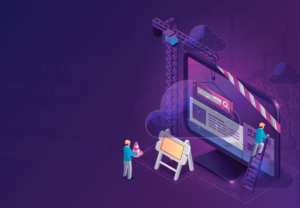Building for Scale: Why Cloud-Native is Your Next Big Business Enabler
“Singapore enterprises increasingly rely on cloud-native architecture to build scalable digital banking platforms and maintain a competitive edge. By leveraging containerisation, DevOps-driven transformation, microservices, and robust enterprise security, organisations can modernise financial applications to achieve measurable cost efficiencies and operational resilience.”
Singapore’s digital-first economy continues to redefine competitive dynamics across industries, with organisations facing unprecedented pressure to deliver innovative solutions at velocity whilst maintaining operational resilience. The city-state’s position as a regional financial hub and technology centre demands that enterprises not merely adapt to change but anticipate and lead market transformations.
For C-suite leaders navigating this landscape, the challenge extends beyond traditional technology decisions. Today’s leadership mandate requires architecting technology infrastructure that can scale dynamically, respond to market volatility, and enable continuous innovation without compromising security or regulatory compliance. This imperative becomes particularly acute in Singapore’s highly regulated sectors, where financial application modernisation Singapore initiatives must balance agility with stringent compliance requirements.
Cloud-native architecture Singapore represents more than an evolutionary step in technology adoption, it constitutes a fundamental business enabler that transforms how organisations conceive, build, and deliver value to customers. The strategic lens through which this transformation should be viewed aligns with a critical insight: “The focus is on building, deploying, and running applications on cloud stacks, utilising technologies like containers to ensure consistent performance and faster delivery of financial applications and other services”. This perspective shifts the conversation from technical implementation to business outcomes, positioning cloud-native capabilities as essential infrastructure for sustained competitive advantage in Singapore’s dynamic market environment.
Defining Cloud-Native: Beyond the Buzzwords
Cloud-native represents an architectural philosophy that leverages cloud computing models to optimise application performance, scalability, and delivery speed. Unlike traditional approaches that simply migrate existing applications to cloud infrastructure, cloud-native design principles fundamentally reimagine how software systems are conceived, constructed, and operated.
- Core Components of Cloud-Native Architecture
The foundation of cloud-native architecture Singapore rests upon four interconnected pillars that collectively enable unprecedented organisational agility.
- a) Microservices
Microservices architecture decomposes monolithic applications into independent, loosely coupled services that can be developed, deployed, and scaled independently. This approach enables technology polyglotism, allowing teams to select optimal technologies for specific service requirements whilst maintaining system coherence. The architectural pattern significantly reduces blast radius during failures, as issues within individual services do not cascade across entire systems.
- b) Containerisation (e.g., Docker & Kubernetes)
Containerisation provides portable, consistent runtime environments that abstract applications from underlying infrastructure dependencies. Container orchestration platforms, particularly Kubernetes, manage these containerised workloads at scale, automatically handling service discovery, load balancing, and resource allocation. This containerisation benefits enterprise Singapore organisations by ensuring consistent application behaviour across development, testing, and production environments whilst enabling efficient resource utilisation.
- c) Continuous Integration/Continuous Delivery (CI/CD)
CI/CD pipelines automate software delivery processes from code commit to production deployment. These automated workflows reduce manual intervention, minimise deployment risk, and enable rapid iteration cycles that are essential for competitive responsiveness. The automation extends beyond deployment to include comprehensive testing, security scanning, and compliance verification, ensuring that speed does not compromise quality or security.
- d) DevOps Principles
DevOps transformation Singapore CXO initiatives foster cultural and operational collaboration between development and operations teams. This cultural shift promotes shared responsibility for application performance, security, and reliability whilst breaking down traditional silos that impede rapid delivery. The DevOps approach enables organisations to respond quickly to market opportunities and customer feedback through shortened feedback loops and increased deployment frequency.
- Distinction from “Cloud-Enabled” or “Cloud-Hosted”
The distinction between cloud-native and cloud-enabled architectures is crucial for strategic decision-making. Cloud-enabled approaches simply migrate existing applications to cloud infrastructure without fundamental architectural changes, limiting the potential benefits of cloud computing. Cloud-native design, conversely, leverages cloud-specific capabilities such as auto-scaling, managed services, and distributed computing models to create applications that are inherently more resilient, scalable, and cost-effective.
The Business Imperative: Tangible Value for Singaporean Enterprises
- Accelerating Innovation and Time-to-Market
- a) Rapid Experimentation and Deployment
Cloud-native architecture facilitates rapid experimentation through feature flags, A/B testing capabilities, and blue-green deployment strategies that allow organisations to test new functionality with minimal risk. This capability proves particularly valuable in Singapore’s fast-moving sectors, where time-to-market advantages can determine market leadership positions.
- b) Competitive Advantage in Singapore Sectors
Financial services organisations in Singapore leverage these capabilities to launch new digital products, respond to regulatory changes, and personalise customer experiences based on real-time data insights. The microservices architecture financial services Singapore implementations enable banks and fintech companies to modernise specific capabilities incrementally whilst maintaining overall system stability.
- Building Unmatched Scalability and Resilience
- a) Elastic Scaling for Fluctuating Demand
Cloud-native systems automatically scale resources based on demand, ensuring optimal performance during peak usage periods whilst minimising costs during low-demand periods. This elastic scaling capability proves essential for financial applications that experience transaction volume spikes during market events or promotional campaigns.
- b) Inherent Fault Tolerance and Self-Healing
The inherent fault tolerance of cloud-native systems derives from distributed architecture patterns that eliminate single points of failure. When individual services encounter issues, circuit breakers and bulkhead patterns prevent cascading failures whilst automated recovery mechanisms restore service availability.
- c) Consistent Performance of Critical Services
This resilience is crucial for maintaining consistent performance of financial applications and other critical services that underpin business operations, directly supporting the leader’s vision of ensuring consistent performance through cloud stack technologies.
- Optimising Costs and Resource Utilisation
- a) Pay-as-You-Go Models and Efficient Allocation
Cloud-native cost optimisation Singapore initiatives deliver substantial economic benefits through improved resource utilisation and operational efficiency. Pay-as-you-go cloud models eliminate the need for over-provisioning infrastructure to handle peak demand, whilst Kubernetes’ intelligent workload scheduling maximises hardware utilisation.
- b) Reduced Operational Overhead
Organisations typically observe 20-30% reductions in infrastructure costs alongside improved application performance when transitioning from traditional architectures to cloud-native implementations.
- c) Focus on Cloud-Native Cost Optimisation Singapore
The architectural approach enables organisations to optimise costs continuously through automated resource management and intelligent workload placement across cloud infrastructure.
- Enhancing Security and Regulatory Compliance
- a) Security by Design in Microservices
Security enhancements inherent in cloud-native design address growing cybersecurity concerns whilst simplifying compliance management. The microservices architecture reduces attack surfaces by isolating individual services, creating smaller, more manageable security domains.
- b) Automated Security Checks in CI/CD
Automated security scanning within CI/CD pipelines identifies vulnerabilities before production deployment, ensuring that security validation occurs consistently throughout the development lifecycle.
- c) Simplified Auditing and Compliance
Enterprise cloud-native security Singapore implementations incorporate zero-trust networking principles, encryption in transit and at rest, and comprehensive audit logging that simplifies regulatory compliance reporting. This proves crucial for meeting MAS regulations and other financial service requirements.
- Fostering a Culture of Agility and Talent Attraction
- a) Increased Developer Productivity
Modern development practices and tools attract top-tier engineering talent whilst improving developer productivity and job satisfaction. This cultural transformation proves particularly valuable in Singapore’s competitive talent market.
- b) Team Autonomy and Modern Tools
Teams gain autonomy over their service domains, enabling faster decision-making and reduced bureaucratic overhead. This empowerment creates an environment where skilled professionals can deliver their best work using contemporary technologies and methodologies.
Cloud-Native in Action: Sector-Specific Impact
- Financial Services Transformation
- a) Trust Bank – Singapore’s First Cloud-Native Digital Bank
Trust Bank, a joint venture between Standard Chartered Bank and FairPrice Group, exemplifies how cloud-native architecture enables scalable digital banking platforms Singapore. Launched in 2022, Trust Bank reached over 600,000 customers within its first year, capturing approximately 12% of the Singapore retail banking market. [13]
Built entirely on a cloud-native stack, Trust Bank leverages containerised microservices, real-time observability, and DevOps practices to deliver seamless digital experiences. The platform ingests and analyses over 1 terabyte of telemetry data daily, enabling real-time decision-making and rapid iteration of financial products such as digital lending and instant card issuance. [13]
This architecture supports the leader’s vision: “building, deploying, and running applications on cloud stacks, utilising technologies like containers to ensure consistent performance and faster delivery of financial applications”. Trust’s use of comprehensive observability tools and AWS for scalable infrastructure demonstrates how cloud-native design directly contributes to resilience, agility, and customer-centric innovation.
By addressing legacy system constraints from inception, Trust avoided the pitfalls of traditional core banking systems, enabling faster time-to-market and continuous delivery of new features.
- b) Addressing Legacy System Challenges
Traditional core banking systems often require months or years to implement new features due to monolithic architectures and manual deployment processes. Cloud-native fintech resilience Singapore implementations enable feature releases within days or weeks, allowing banks to respond quickly to customer needs and market opportunities. This agility proves particularly valuable in Singapore’s competitive banking landscape, where customer expectations continue to rise and regulatory requirements evolve rapidly.
- Beyond Finance: Broader Enterprise Application in Singapore
- a) Manufacturing, Logistics, and Government Applications
The scalable digital banking platforms Singapore trend extends beyond traditional banks to include fintech companies and digital payment providers that leverage cloud-native architecture to deliver innovative financial services. These platforms utilise microservices to decompose complex financial workflows into manageable components that can be optimised, tested, and deployed independently.
- b) Singapore Government – Government on Commercial Cloud (GCC)
Singapore’s public sector demonstrates cloud-native adoption through the Government on Commercial Cloud initiative, which exceeded its original targets by migrating over 80% of eligible government systems to cloud platforms by 2024. This transformation enabled agencies to modernise citizen-facing services such as MyCareersFuture and GoBusiness using cloud-native capabilities including auto-scaling, CI/CD pipelines, and real-time analytics. [14]
The results include faster deployment cycles, improved service reliability, and enhanced user experiences for Singapore residents and businesses. This initiative demonstrates how Singapore enterprise cloud adoption strategy extends beyond private sector implementations to encompass comprehensive digital government transformation. [14]
- AI Innovation at Scale
- a) Foundation for AI/ML Model Deployment
Artificial intelligence and machine learning capabilities benefit significantly from cloud-native infrastructure patterns that enable rapid model deployment, A/B testing, and performance monitoring. The containerised deployment model simplifies model versioning, rollback procedures, and resource allocation for compute-intensive AI workloads.
- b) Integration with Financial Applications
Financial institutions in Singapore leverage these capabilities to implement fraud detection algorithms, credit scoring models, and algorithmic trading systems that require low-latency processing and high throughput. The convergence of cloud-native architecture with AI technologies creates unprecedented opportunities for innovation and value creation across multiple business domains.

Navigating the Cloud-Native Journey: Strategic Considerations for Leaders
- Cultural Shift and DevOps Transformation
- a) Fostering a DevOps Transformation Singapore CXO Mindset
Successful cloud-native transformation requires strategic leadership that addresses cultural, technical, and operational dimensions simultaneously. The DevOps transformation Singapore CXO initiatives must begin with cultural change that promotes collaboration, shared responsibility, and continuous learning across traditionally siloed teams. This cultural foundation enables technical transformations whilst ensuring that organisational capabilities evolve alongside technological implementations.
- b) Investment in Training and Collaboration
Investment in training and skill development proves essential for building internal capabilities that can effectively leverage cloud-native technologies. Organisations should establish clear learning pathways for developers, operations teams, and security professionals that encompass both technical skills and collaborative working methods. The training programmes should emphasise hands-on experience with containerisation, microservices design patterns, and CI/CD pipeline construction to build practical competencies.
- Building a Robust Data Architecture
- a) Modern Data Foundation Necessity
Data architecture modernisation represents a critical prerequisite for cloud-native success, as traditional data management approaches often limit the scalability, and agility benefits that cloud-native applications can deliver. Organisations must design flexible, scalable data foundations that support distributed application architectures whilst maintaining data consistency and integrity. This involves implementing event-driven architectures, adopting cloud-native databases, and establishing data governance frameworks that operate effectively across microservices boundaries.
- Strategic Partnerships and Choosing the Right “Guide”
- a) Leveraging Cloud Providers and Expert Partners
Strategic partnerships with cloud providers and technology partners accelerate cloud-native adoption whilst reducing implementation risks. Leading cloud platforms provide comprehensive frameworks, reference architectures, and managed services that simplify complex technical decisions.
- b) Adopting Well-Architected Frameworks
The Well-Architected Framework principles guide architectural decisions across security, reliability, performance efficiency, cost optimisation, and operational excellence dimensions. These frameworks encapsulate industry best practices whilst providing specific guidance for common implementation challenges that organisations encounter during cloud-native transformation.
- Incremental Modernisation and Platform Engineering
- a) Phased Approach Over “Big Bang”
Singapore enterprise cloud adoption strategy development should emphasise incremental modernisation approaches that minimise business disruption whilst building organisational capabilities progressively. Rather than attempting comprehensive system replacements, organisations should identify high-value, low-risk applications for initial cloud-native implementations. These pilot projects provide learning opportunities whilst demonstrating tangible business value that justifies broader transformation investments.
- b) Establishing Internal Platform Teams
Platform engineering initiatives establish internal capabilities that accelerate development team productivity through self-service infrastructure provisioning, standardised deployment pipelines, and comprehensive observability tools. Internal platform teams create abstractions that simplify complex cloud-native technologies whilst ensuring consistency, security, and compliance across development teams.
- c) Leveraging Singapore Enterprise Cloud Adoption Strategy
This approach enables developers to focus on business logic whilst leveraging sophisticated infrastructure capabilities without requiring deep specialisation in cloud technologies. The strategy should align with broader organisational objectives whilst providing practical guidance for implementation teams.
- Governance and Security by Design
- a) Implementing Robust Governance Models
Governance frameworks for distributed systems address the complexity and coordination challenges that emerge when organisations operate numerous independent services across cloud environments. Effective governance encompasses service discovery mechanisms, API management practices, security policy enforcement, and performance monitoring that provide visibility and control without constraining team autonomy.
- b) Embedding Security from the Outset
The CIO guide cloud-native Singapore implementations must prioritise security by design principles that embed protection mechanisms throughout application architectures rather than treating security as a perimeter concern. This involves implementing zero-trust networking, comprehensive logging and monitoring, automated vulnerability scanning, and incident response procedures that operate effectively across distributed systems.
- c) Addressing Compliance and Data Integrity Concerns
Security considerations should influence architectural decisions from initial design through ongoing operations to ensure that cloud-native systems meet or exceed traditional security standards. The governance approach should balance standardisation with flexibility to enable innovation whilst maintaining operational stability and regulatory compliance requirements.

Conclusion
Cloud-native architecture is a strategic enabler for Singapore enterprises aiming to scale, innovate, and remain resilient in a fast-evolving digital landscape. It supports faster innovation cycles, operational efficiency, robust security, and improved customer experiences.
Organisations that invest in cloud-native foundations today are better positioned to adapt to emerging technologies, shifting customer expectations, and regulatory demands. The integration of AI, analytics, and cloud-native platforms creates new opportunities for value creation.
Motherson Technology Services, Singapore, supports this transformation through expertise in containerisation, microservices, and DevOps. By partnering with experienced providers, enterprises can accelerate their cloud-native journey while focusing on strategic growth and differentiation.
References
About the Author:

Pankaj Chopra
Sales Head & VP, Far East
Motherson Technology Service Limited
Pankaj has 25+ years of IT industry experience in managing business and Sales Teams across India and the Far East. As an industry veteran, Pankaj has deep domain expertise in BFSI, Enterprise, and Public Sector verticals. In addition, Pankaj is a certified AWS Business Professional and is currently helping clients in the areas of legacy modernisation & transition to the Cloud. Pankaj also focuses on meeting new-age customer demands based on domain-led next-generation services including Cloud, Industry 4.0, and Intelligent automation with client-centric business models. With over two decades of experience, Pankaj has had the opportunity to experience changing customer expectations first-hand, work with industry stalwarts to shape the future of work and navigate the evolving business paradigm while enabling him to forge critical relationships with clients and partners, including Fortune 500 companies.

 June 4, 2025
June 4, 2025 Pankaj Chopra
Pankaj Chopra















































